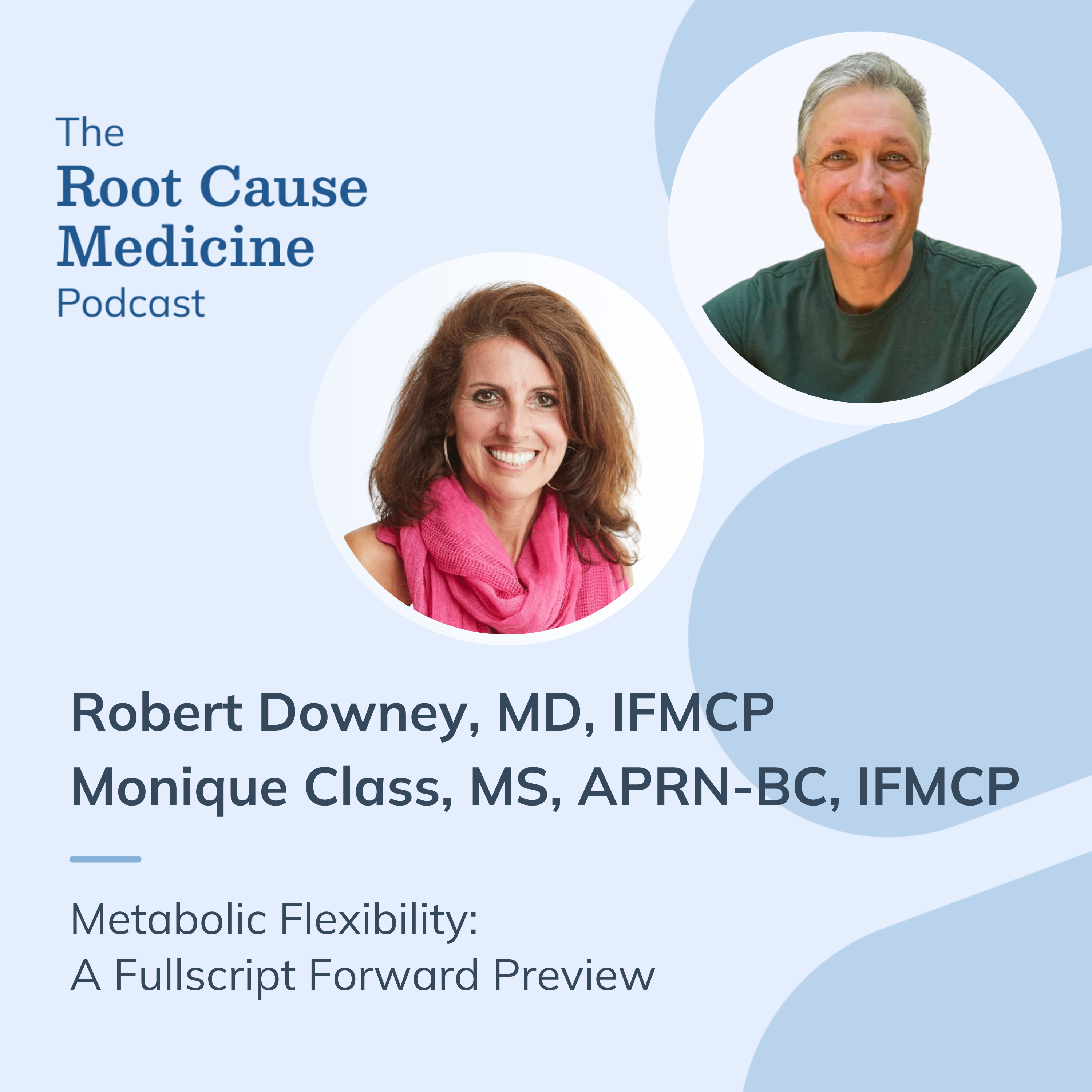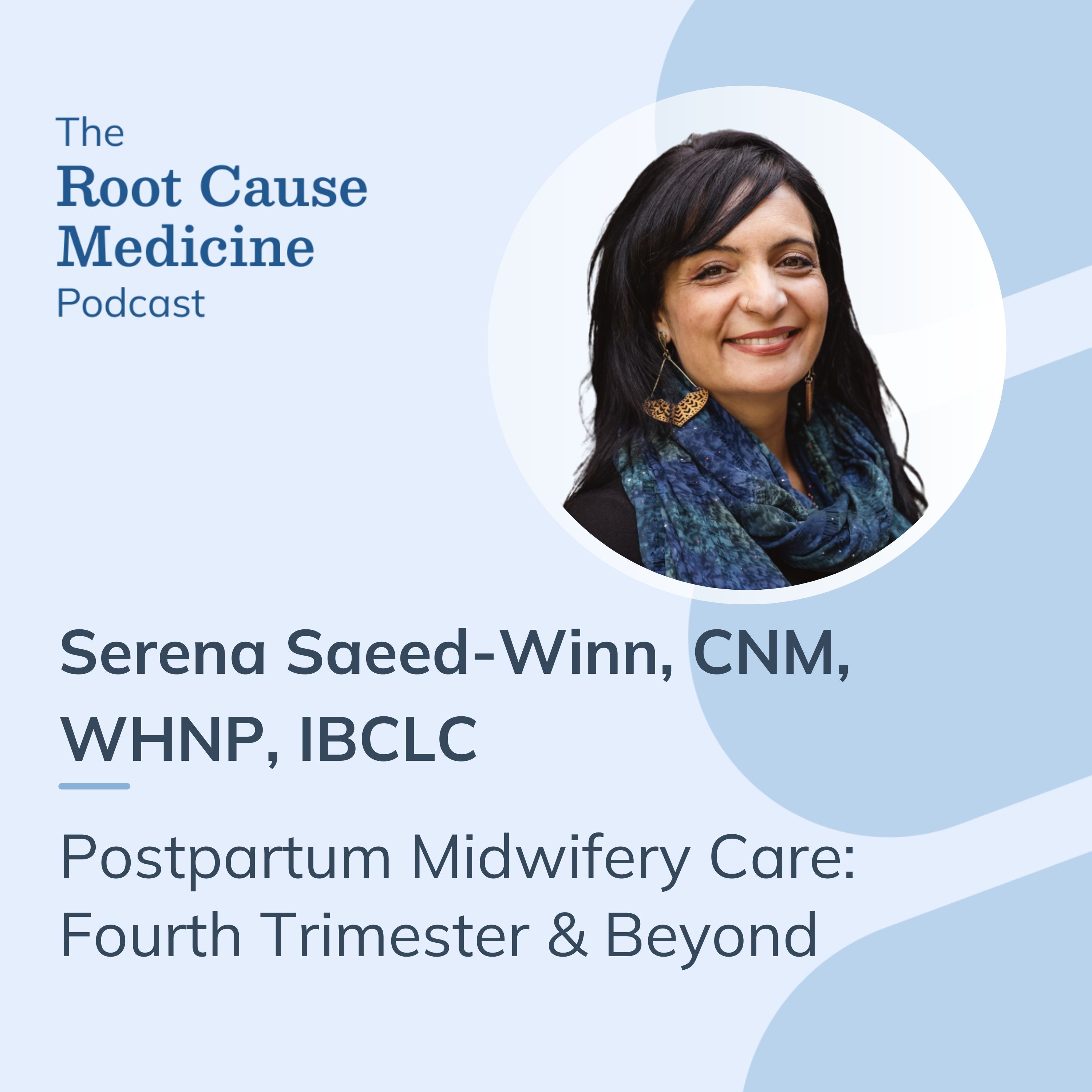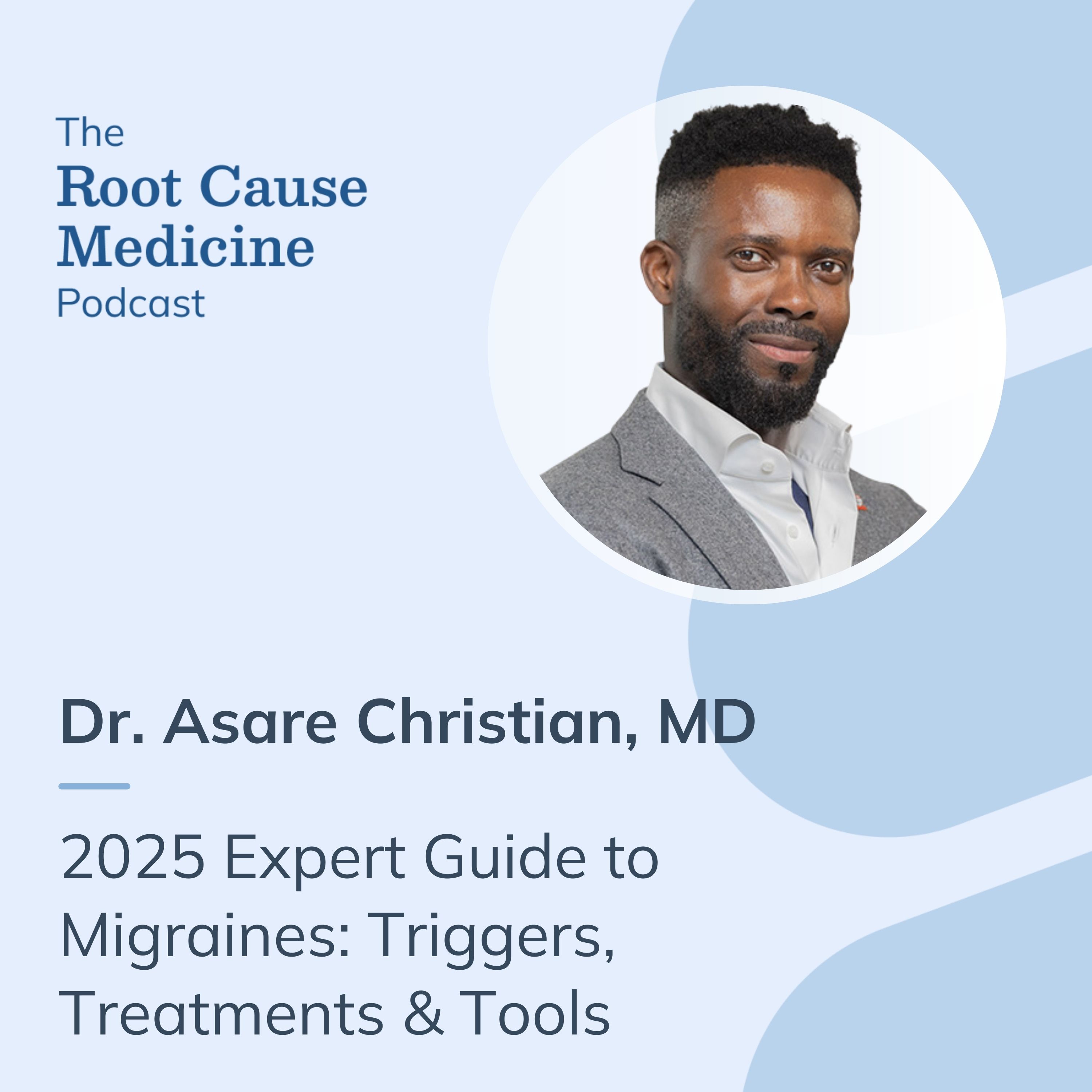Ovarian cysts are fluid-filled growths within the ovaries that frequently occur in women of all ages. Regardless of age, ovarian cysts are most commonly benign and resolve spontaneously. However, increased age may increase the risk for malignancy, and ovarian torsion and cyst rupture can occur with larger cysts. (15)
Aside from surgical removal and oral contraceptive pills, the conventional approach offers limited options to manage ovarian cysts. A functional medicine approach to ovarian cysts, which emphasizes identifying and addressing underlying factors, opens up options for those looking to be more proactive in supporting ovarian health.
[signup]
What is an Ovarian Cyst?
An ovarian cyst is a fluid-filled sac that forms on or within the ovary. Ovarian cysts are categorized as either functional or complex. (1)
Functional Cysts
Functional, or simple, cysts are the most common type of ovarian cyst. There are two types of functional cysts, both related to the menstrual cycle and ovulation. Each month, ovarian follicles mature to release an egg at ovulation. If a follicle doesn't release an egg, it can fill with fluid and continue to grow, causing a follicular cyst. If ovulation does occur, the ruptured follicle becomes the corpus luteum, which produces hormones to support fertility. The corpus luteum persists for 14 days to 14 weeks before it dissolves, depending if fertilization of the egg occurs. In some instances, dissolution may not occur, and fluid may collect in the corpus luteum, forming a cyst. Functional cysts are benign and usually resolve on their own within 60 days without intervention. (2, 3)
Complex Cysts
Complex ovarian cysts are those that form unrelated to the menstrual cycle. Most complex cysts are benign, especially in premenopausal women. There are three types of complex cysts. Cystadenomas are cysts on the surface of the ovary that are filled with a watery or mucous fluid. Dermoid cysts (teratomas) are formed from embryonic cells and contain various tissues like skin, hair, and teeth. Endometriomas, associated with endometriosis, are cysts filled with endometrial tissue. (1, 3)
How Common are Ovarian Cysts?
Ovarian cysts are common in both pre- and postmenopausal women. It is estimated that nearly 20% of women will develop an ovarian cyst at some point during their lives. The vast majority of ovarian cysts are benign, with less than 1% of all cysts being malignant. Of the cysts that require additional evaluation, 13-21% are diagnosed as malignant. (3, 4)
Ovarian Cyst Symptoms
Most cysts are small, asymptomatic, and resolve on their own. They are usually diagnosed incidentally on routine pelvic examination or pelvic imaging ordered for other reasons. (5)
When cysts grow, they may cause symptoms like (5):
- Dull, aching pain in the lower abdomen, low back, or pelvis
- Bloating
- Pain with sex
- Changes in bowel movements or urination
- Painful periods
Some cysts may rupture or cause ovarian torsion, in which the ovary twists around the ligaments that hold it in place. In either of these scenarios, more severe, acute pain will occur, often accompanied by nausea, vomiting, fever, dizziness, and vaginal bleeding. (5)
What Size of Ovarian Cyst is Concerning?
The size of the cyst can help determine the cyst type and is one of the factors that determines management recommendations. Ovarian cysts can vary in size, ranging from less than 1 cm to over 10 cm in diameter (6).
Cysts greater than 7 cm in diameter can be challenging to assess entirely with ultrasound alone; follow-up MRI imaging is often recommended. Most cysts smaller than 10 cm (4 in) in diameter are inconsequential. Once cyst size increases above 10 cm, the cyst has a 13% chance of being malignant, and surgical removal may be considered. (7)
What Causes Ovarian Cysts?
Most cysts are caused by normal hormonal fluctuations of the menstrual cycle that drive the development of follicles and the corpus luteum. Other conditions defined by hormonal changes and imbalances can also cause ovarian cysts to occur. These include polycystic ovarian syndrome (PCOS) and pregnancy. Corpus luteum cysts are always present during early pregnancy but usually resolve without intervention by the end of the first trimester (2). Fertility medications, like clomiphene, can also increase the risk of ovarian cyst formation. (8)
Endometriosis occurs when the endometrium, the tissue lining the inside of the uterus, grows outside the uterus. Endometrial tissue that attaches to the ovary can cause an endometrioma. (8)
Genitourinary infections like gonorrhea and chlamydia can cause ovarian cyst formation if the infection travels to the upper reproductive tract, causing pelvic inflammatory disease (PID) (9).
Cancerous cysts are rare but can occur when ovarian cells grow abnormally (8).
Personal history of ovarian cysts, hypothyroidism, cigarette smoking, and tubal ligation can increase the risk of developing ovarian cysts (2, 9).
Functional Medicine Labs to Explore Root Causes of Ovarian Cysts
Transvaginal ultrasound is the standard for evaluating ovarian cysts (11). Functional medicine labs can help practitioners identify potential underlying factors and personalize options for their patients. Below are some of the most common labs considered for patients with ovarian cysts.
Hormone Testing
Because ovarian cysts are common in pregnancy, pregnancy should be ruled out in patients of reproductive age with serum hCG.
Hypothyroidism can be assessed with a serum thyroid panel, which measures TSH, free T4, and free T3.
Sex hormones can be evaluated with a blood, saliva, or urine test. Measuring androgens, estrogen, and progesterone can help identify hormonal imbalances that may predispose a patient to cyst formation.
STI Testing
A pelvic exam and urine testing are routine in ruling out infection and PID that may contribute to ovarian cyst formation.
Blood Sugar
Insulin resistance and blood sugar dysregulation are highly correlated with PCOS and its associated hormonal imbalances. Blood glucose, insulin, and hemoglobin A1c (HbA1c) can aid in assessing for metabolic syndrome in patients with PCOS and ovarian cysts.
CA-125
CA-125 is a protein present on the cell membrane of ovarian tissues. It is elevated in the presence of ovarian cancer and may be measured to help differentiate between benign and malignant ovarian cysts. CA-125 is not recommended in every case because it can become elevated due to noncancerous conditions, including endometriosis, uterine fibroids, and pelvic infections. CA-125 is often considered for postmenopausal women with ovarian cysts or for premenopausal women with large or suspicious-looking cysts on imaging. (2, 10)
Conventional Management for Ovarian Cysts
Ultrasound findings help guide conventional and functional management recommendations. Patients with concerning ultrasonography findings, elevated CA-125, or a family history of ovarian or breast cancer should be referred to a gynecologist or gynecologic oncologist. (11)
Functional and complex cysts in premenopausal women smaller than 10 cm can be monitored conservatively with serial ultrasounds. Patients should be referred to a gynecologist when cysts persist longer than 12 weeks or for cysts larger than 10 cm. (11)
Postmenopausal women with a complex cyst or a simple cyst larger than 10 cm should be referred to a gynecologist. (11)
Painful, symptomatic cysts are usually managed with nonsteroidal anti-inflammatory drugs (NSAIDs) or a short course of narcotics for pain relief. Surgical removal may be considered for cysts that are large, complex, or causing pain. Oral contraceptives may also be considered to help prevent the formation of new cysts. (11)
How to Support Ovarian Health Naturally with Functional Medicine
The main goal of a functional medicine approach to ovarian cysts is addressing potential underlying factors of cyst formation to support ovarian health. Conventional medical care is appropriate and necessary for patients with ovarian cyst rupture, ovarian torsion, PID, and large, complex, or malignant cysts.
Foods to Consider Avoiding with Ovarian Cysts
Synthetic xenoestrogens are estrogen-mimicking compounds with endocrine-disrupting capacity that can significantly impair healthy hormone balance. Our dietary choices can influence our exposure to xenoestrogens, as these hormone disruptors can be present in the foods and their packaging materials. Buying organically, locally-grown foods and hormone-free meats can reduce xenoestrogen exposure. It is also suggested to avoid microwaving foods in plastic containers, foods packaged in BPA-containing containers, or using plastic wrap to cover or store leftovers. (12)
A case-control study conducted between 1984 and 1994 suggested that ovarian cysts are associated with beef and dairy consumption; reducing the intake of these foods may help manage cyst formation (13). Patients with PCOS may additionally benefit from considering a reduction in saturated fats and fructose.
Foods That May Support Ovarian Health
Seed cycling is a common food-as-medicine approach recommended by functional practitioners to support healthy hormonal balance. Seed cycling encompasses the incorporation of flax and pumpkin seeds into the diet during the follicular phase of the menstrual cycle, and sesame and sunflower seeds into the diet during the luteal phase of the menstrual cycle.
The same case-control study referenced above also suggested that increasing the intake of green vegetables may have a protective effect against ovarian cysts (13).
Incorporating high-fiber foods into the diet supports a healthy microbiome and liver, which may improve hormonal metabolism and balance. Adding cruciferous vegetables into the diet (e.g., cabbage, broccoli, brussels sprouts), which contain high amounts of diindolylmethane (DIM), can also support healthy liver function to help clear excess hormones from the body. (14)
Supplements & Herbs That May Support Ovarian Health
Vitamin D deficiency is common in patients with endometrioma, suggesting that supplementation to achieve optimal vitamin D status may be helpful in supporting ovarian health.
Inositol is a naturally occurring six-carbon sugar that plays an important role in various cellular processes, including hormonal signaling. Formulas consisting of myo-inositol and d-chiro-inositol are shown to support ovarian and metabolic functioning. Inositol is commonly given to women with PCOS to support insulin sensitivity, help manage elevated testosterone, and regulate menstrual cycles.
Chaste tree berry (Vitex agnus-castus) is a traditional botanical that may help balance hormones by supporting the hypothalamic-pituitary-ovarian axis. This herb is sometimes used to support ovarian health and hormonal balance characterized by progesterone deficiency and estrogen excess.
Turska's formula is a traditional naturopathic herbal formula that contains Aconite napellus (monkshood), Gelsemium sempervirens (yellow jasmine), Bryonia alba (bryony), and Phytolacca americana (poke root). Turska's formula is sometimes considered for supporting the management of abnormal cell growth, including ovarian cysts and endometriosis.
Castor oil, made from the seeds of the castor plant, contains more than 90% of ricinoleic acid, an omega-9 fatty acid with pain-relieving and anti-inflammatory properties. Applied topically to the abdomen and pelvis, castor oil may help relieve pain and discomfort associated with ovarian cysts.
Complementary and Alternative Medicine Approaches for Ovarian Health
Acupuncture has been shown to increase blood flow to the ovaries, support ovarian size and the number of ovarian cysts, and improve glycemic control by supporting insulin sensitivity. Acupuncture can be an adjunctive therapy in optimizing ovarian health and function.
Gui Zhi Fu Li Wan is a commonly used Chinese herbal formula for women's health and has been used for thousands of years. In Chinese medicine theory, the formula's prescriptive actions are: invigorating the blood, transforming blood stasis, softening lumps, and reducing fixed abdominal pain.
Through recent research, it has been suggested that Gui Zhi Fu Li Wan's effects on ovarian cysts may lie in supporting gut flora and reducing inflammation and insulin resistance. This, in turn, may have a positive impact on ovarian health.
[signup]
Summary
Functional and complex ovarian cysts are commonly benign and asymptomatic fluid-filled sacs found incidentally in women of all ages. Conventional management of ovarian cysts relies predominantly on ultrasound findings and past medical history. Conventional intervention is appropriate for addressing medical complications caused by cysts and malignancy. However, this is not true for most patients, and the conventional approach lacks options for cyst prevention. By working with a functional medicine provider, you can explore reasons that may predispose you to cyst formation. Natural protocols that include dietary modifications, supplementation, and acupuncture may support the optimization of reproductive health and help manage ovarian cyst formation.












%201.svg)






